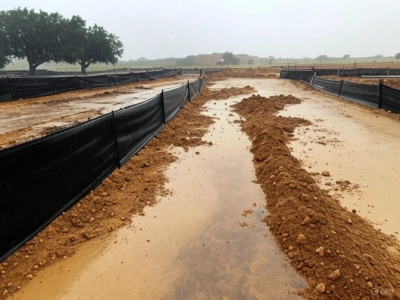What Is a Notice of Termination and When Is It Needed in Texas?
If you are managing a construction project in Texas, you have likely heard of the Notice of Termination (NOT). This document plays a key role in wrapping up your stormwater compliance obligations under the Texas Commission on Environmental Quality (TCEQ) regulations. Understanding the purpose of an NOT and knowing when to submit it can save you from regulatory headaches and ensure your project ends on a compliant note.
What Is a Notice of Termination?
Abbreviated: NOT
A Notice of Termination is a formal document you submit to TCEQ to end your coverage under the Texas Pollutant Discharge Elimination System (TPDES) Construction General Permit (TXR150000). This permit, required for projects disturbing one acre or more, mandates a Stormwater Pollution Prevention Plan (SWPPP) to manage runoff and protect Texas waterways. Once your construction activities are complete and your site is stabilized, filing an NOT signals that you no longer need permit coverage because your project no longer poses a risk of stormwater pollution.
The NOT serves as proof that you have met all permit requirements, including site stabilization and final inspections. It is a critical step to close out your responsibilities and avoid ongoing compliance obligations or potential fines.
When Should You Submit an NOT in Texas?
In Texas, you can submit your Notice of Termination when the following conditions are met:
- All Construction Is Complete: All construction activities, including grading, building, and landscaping, must be finished. This includes any temporary activities like equipment storage or material staging.
- Work Site Is Completely Stabilized: TCEQ requires that all disturbed areas be stabilized to prevent erosion and runoff. This typically means achieving at least 70 percent vegetative cover (e.g., grass, plants) across the site. Alternatively, you can use permanent stabilization methods like pavement, riprap, or mulch if vegetation is not feasible.
- No Further stormwater Discharges: There should be no remaining stormwater discharges containing pollutants from your site. This means temporary Best Management Practices (BMPs), such as silt fences or sediment basins, must be removed or no longer needed.
- Final Inspection Is Done: Conduct a final inspection to confirm that all SWPPP requirements are met, BMPs are removed, and the site complies with TCEQ standards. Document this inspection in your records.
Once these conditions are satisfied, you can file your NOT here.
Important: Be sure to keep records of your NOT submission and all SWPPP documentation for at least three years, as TCEQ may request them during an audit.
Why Is an (NOT) Important?
Submitting an NOT on time protects you from unnecessary regulatory oversight. If you fail to file, TCEQ may assume your site is still active, leaving you liable for ongoing inspections, reporting, or even fines for non compliance. An NOT also demonstrates your commitment to environmental stewardship, showing regulators and clients that you take stormwater management seriously.
Let Us Help You Close Out Your Project
Filing a Notice of Termination is the final step in your SWPPP filing, but ensuring compliance can be tricky. We make it easy. Our team of experts can guide you through site stabilization, final inspections, and NOT submission, ensuring your project ends smoothly. Don't risk penalties or delays. Contact us today for a free consultation.
Home > Articles > What Is a Notice of Termination (NOT) and When Is It Needed in Texas?


